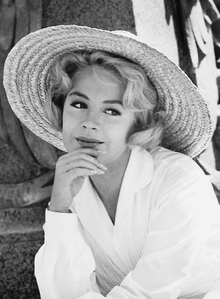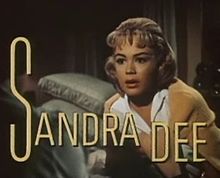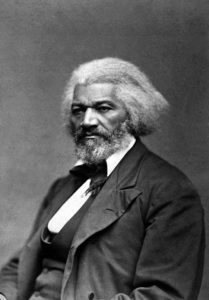 On this day in 1895, social reformer, abolitionist, orator, writer, and statesman Frederick Douglass died from a heart attack in his home in Washington D. C., at the age of 77. Born Frederick Augustus Washington Bailey; c. February 1818 in . After escaping from slavery in Maryland, he became a national leader of the abolitionist movement in Massachusetts and New York, gaining note for his oratory and incisive antislavery writings. In his time, he was described by abolitionists as a living counter-example to slaveholders’ arguments that slaves lacked the intellectual capacity to function as independent American citizens. Northerners at the time found it hard to believe that such a great orator had once been a slave.
On this day in 1895, social reformer, abolitionist, orator, writer, and statesman Frederick Douglass died from a heart attack in his home in Washington D. C., at the age of 77. Born Frederick Augustus Washington Bailey; c. February 1818 in . After escaping from slavery in Maryland, he became a national leader of the abolitionist movement in Massachusetts and New York, gaining note for his oratory and incisive antislavery writings. In his time, he was described by abolitionists as a living counter-example to slaveholders’ arguments that slaves lacked the intellectual capacity to function as independent American citizens. Northerners at the time found it hard to believe that such a great orator had once been a slave.
Douglass wrote several autobiographies. He described his experiences as a slave in his 1845 autobiography, Narrative of the Life of Frederick Douglass, an American Slave, which became a bestseller, and was influential in promoting the cause of abolition, as was his second book, My Bondage and My Freedom (1855). After the Civil War, Douglass remained an active campaigner against slavery and wrote his last autobiography, Life and Times of Frederick Douglass. First published in 1881 and revised in 1892, three years before his death, it covered events during and after the Civil War. Douglass also actively supported women’s suffrage, and held several public offices. Without his approval, Douglass became the first African American nominated for Vice President of the United States as the running mate and Vice Presidential nominee of Victoria Woodhull, on the Equal Rights Party ticket.
Douglass was a firm believer in the equality of all peoples, whether black, female, Native American, or recent immigrant. He was also a believer in dialogue and in making alliances across racial and ideological divides, and in the liberal values of the U.S. Constitution. When radical abolitionists, under the motto “No Union with Slaveholders”, criticized Douglass’ willingness to engage in dialogue with slave owners, he famously replied: “I would unite with anybody to do right and with nobody to do wrong.”
Douglass was married to Anna Murray on September 15, 1838, by a black Presbyterian minister, just eleven days after Douglass had reached New York. After Anna died in 1882, Douglass married again, to Helen Pitts, a white suffragist and abolitionist from Honeoye, New York, in 1884. A graduate of Mount Holyoke College (then called Mount Holyoke Female Seminary), Pitts worked on a radical feminist publication named Alpha while living in Washington, D.C. She later worked as Douglass’s secretary.
Their marriage provoked a storm of controversy, since Pitts was both white and nearly 20 years younger than Douglass. Her family stopped speaking to her; his children considered the marriage a repudiation of their mother. But feminist Elizabeth Cady Stanton congratulated the couple. Douglass responded to the criticisms by saying that his first marriage had been to someone the color of his mother, and his second to someone the color of his father.
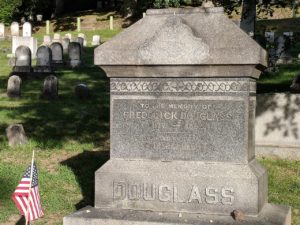 The Final Footprint
The Final Footprint
His funeral was held at the Metropolitan African Methodist Episcopal Church. Thousands of people passed by his coffin to show their respect. Although Douglass had attended several churches in the nation’s capital, he had a pew here and donated two standing candelabras when this church had moved to a new building in 1886. He also gave many lectures there, including his last major speech, “The Lesson of the Hour.”
Douglass’ coffin was transported back to Rochester, New York, where he had lived for 25 years, longer than anywhere else in his life. He was buried next to Anna in the Douglass family plot of Mount Hope Cemetery, and Helen joined them in 1903. Another notable final footprint at Mount Hope is Susan B. Anthony.
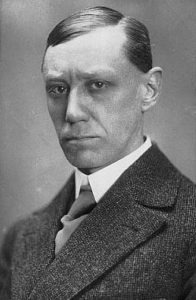 On this day in 1936, actor Max Schreck died from a heart attack in Munich at the age of 56. Born Friedrich Gustav Maximilian Schreck on 6 September 1879 in Berlin. Perhaps best known for his lead role as the vampire Count Orlok in the film Nosferatu (1922).
On this day in 1936, actor Max Schreck died from a heart attack in Munich at the age of 56. Born Friedrich Gustav Maximilian Schreck on 6 September 1879 in Berlin. Perhaps best known for his lead role as the vampire Count Orlok in the film Nosferatu (1922).
Schreck was married to actress Fanny Normann, who appeared in a few films, often credited as Fanny Schreck.
On 19 February 1936, Schreck had just played The Grand Inquisitor in the play Don Carlos. That evening he felt unwell and the doctor sent him to the hospital where he died early the next morning.
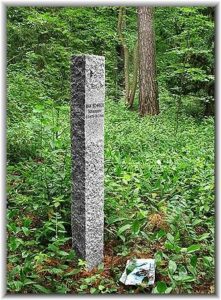
The Final Footprint
His obituary especially praised his role as The Miser in Molière’s comedy play. He was buried on 14 March 1936 at Wilmersdorfer Waldfriedhof Stahnsdorf in Brandenburg.
#RIP #OTD in 1993 automobile designer, inventor, mechanic, engineer, winemaker, industrialist, founder of Automobili Lamborghini, Ferruccio Lamborghini died at Silvestrini Hospital in Perugia after suffering a heart attack, aged 76. Cimitero di Renazzo, Italy
#RIP #OTD in 1996 artist’s model (more than 12 statues in New York City), actress (Inspiration), America’s first supermodel, Audrey Munson died at St. Lawrence State Hospital for the Insane in Ogdensburg, New York aged 104. New Haven Cemetery in New Haven, New York
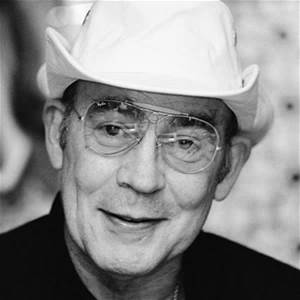 On this day in 2005, journalist and author Hunter S. Thompson died from a self-inflicted gunshot at his home, Owl Farm near Woody Creek, Colorado, at the age of 67. Born Hunter Stockton Thompson on 18 July 1937 in Louisville, Kentucky. Thompson traveled frequently, including stints in California, Puerto Rico and Brazil, before settling in Aspen, Colorado, in the early 1960s. He became internationally known with the publication of Hell’s Angels: The Strange and Terrible Saga of the Outlaw Motorcycle Gangs (1967). Thompson had spent a year living and riding with the Angels, experiencing their lives and hearing their stories first hand. With the publication in 1970 of “The Kentucky Derby Is Decadent and Depraved” he became a counter cultural figure, with his own brand of New Journalism he termed “Gonzo”, an experimental style of journalism where reporters involve themselves in the action to such a degree that they become central figures of their stories. The work he perhaps remains best known for is Fear and Loathing in Las Vegas: A Savage Journey to the Heart of the American Dream (1972), a rumination on the failure of the 1960s counterculture movement. It was first serialized in Rolling Stone, a magazine with which Thompson would be long associated, and was released as a film starring Johnny Depp and directed by Terry Gilliam in 1998. Politically minded, Thompson ran unsuccessfully for sheriff of Pitkin County, Colorado, in 1970, on the Freak Power ticket. He was well known for his inveterate hatred of Richard Nixon, whom he claimed represented “that dark, venal, and incurably violent side of the American character” and whom he characterized in what might be his greatest contribution to American Literature, Fear and Loathing on the Campaign Trail ’72. Thompson’s output notably declined from the mid-1970s, as he struggled with the consequences of fame, and he complained that he could no longer merely report on events as he was too easily recognized. He was also known for his lifelong use of alcohol and illegal drugs; his love of firearms, and his iconoclastic contempt for authoritarianism, and remarked that, “I hate to advocate drugs, alcohol, violence, or insanity to anyone, but they’ve always worked for me.”
On this day in 2005, journalist and author Hunter S. Thompson died from a self-inflicted gunshot at his home, Owl Farm near Woody Creek, Colorado, at the age of 67. Born Hunter Stockton Thompson on 18 July 1937 in Louisville, Kentucky. Thompson traveled frequently, including stints in California, Puerto Rico and Brazil, before settling in Aspen, Colorado, in the early 1960s. He became internationally known with the publication of Hell’s Angels: The Strange and Terrible Saga of the Outlaw Motorcycle Gangs (1967). Thompson had spent a year living and riding with the Angels, experiencing their lives and hearing their stories first hand. With the publication in 1970 of “The Kentucky Derby Is Decadent and Depraved” he became a counter cultural figure, with his own brand of New Journalism he termed “Gonzo”, an experimental style of journalism where reporters involve themselves in the action to such a degree that they become central figures of their stories. The work he perhaps remains best known for is Fear and Loathing in Las Vegas: A Savage Journey to the Heart of the American Dream (1972), a rumination on the failure of the 1960s counterculture movement. It was first serialized in Rolling Stone, a magazine with which Thompson would be long associated, and was released as a film starring Johnny Depp and directed by Terry Gilliam in 1998. Politically minded, Thompson ran unsuccessfully for sheriff of Pitkin County, Colorado, in 1970, on the Freak Power ticket. He was well known for his inveterate hatred of Richard Nixon, whom he claimed represented “that dark, venal, and incurably violent side of the American character” and whom he characterized in what might be his greatest contribution to American Literature, Fear and Loathing on the Campaign Trail ’72. Thompson’s output notably declined from the mid-1970s, as he struggled with the consequences of fame, and he complained that he could no longer merely report on events as he was too easily recognized. He was also known for his lifelong use of alcohol and illegal drugs; his love of firearms, and his iconoclastic contempt for authoritarianism, and remarked that, “I hate to advocate drugs, alcohol, violence, or insanity to anyone, but they’ve always worked for me.” 
The Final Footprint – On 20 August 2005, in a private ceremony, Thompson’s cremated remains were fired from a cannon. This was accompanied by red, white, blue and green fireworks-all to the tune of Norman Greenbaum’s “Spirit in the Sky” and Bob Dylan’s “Mr. Tambourine Man.” The cannon was placed atop a 153-foot (47 m) tower which had the shape of a double-thumbed fist clutching a peyote button, a symbol originally used in his 1970 campaign for Sheriff of Pitkin County, Colorado. Apparently, the funeral was funded by Depp. He told the Associated Press, “All I’m doing is trying to make sure his last wish comes true. I just want to send my pal out the way he wants to go out.” Other notable attendees included U.S. Senator John Kerry, former U.S. Senator George McGovern, 60 Minutes correspondents Ed Bradley and Charlie Rose, Jack Nicholson, John Cusack, Bill Murray, Benicio del Toro, Sean Penn, Josh Hartnett, Lyle Lovett, and John Oates.
| Sandra Dee | |
|---|---|
On this day in 2005, actress Sandra Dee died at age 62 of complications from kidney disease, brought on by a lifelong struggle with anorexia nervosa at the Los Robles Hospital & Medical Center in Thousand Oaks, California. Born Alexandra Zuck on April 23, 1942 in Bayonne, New Jersey. Dee began her career as a child model, working in commercials before transitioning to film in her teenage years. Best known for her portrayal of ingénues, Dee earned a Golden Globe Award as one of the year’s most promising newcomers for her performance in Robert Wise’s Until They Sail (1958). She became a teenage star for her subsequent performances in Imitation of Life and Gidget (both 1959), which made her a household name.
Dee married Bobby Darin in 1960. They met while filming Come September, which was released in 1961. She and Darin divorced in 1967. Bobby Darin died at age 37 in 1973. She never remarried.
Pop culture references:
- One of the popular songs of the Broadway musical and movie Grease (1978) is “Look at Me, I’m Sandra Dee”, in which the rebellious Rizzo satirizes new girl Sandra Dumbrowski (Sandra Dee Olson in the film) and her clean-cut image, likened to Sandra Dee’s (the character’s name is thus a play on the real-life actress). According to a family friend, Dee “always had a big laugh about it.”
- Dee’s life with Bobby Darin was dramatized in the film Beyond the Sea (2004), in which Kevin Spacey played Darin and Dee was played by Kate Bosworth.
- She is referenced in the Rodney Crowell song “I Ain’t Living Long Like This” (“I live with Angel she’s a roadhouse queen, makes Texas Ruby look like Sandra Dee”)
- She is also referenced in the Badly Drawn Boy song “One Last Dance” (“To this day I’m lovin’ you, we know what we wanna do. I am your Troy Donahue and you are my Sandra Dee”)
- In the movie Kissing Jessica Stein, a character mentions her by saying: “I took out an ad for Christ’s sake. And I ended up with the Jewish Sandra Dee.”
- The Mötley Crüe song Come On And Dance (1981) references her: “Electric love/Like Sandra Dee.”
The Final Footprint
Have you planned yours yet?
Follow TFF on twitter @RIPTFF

